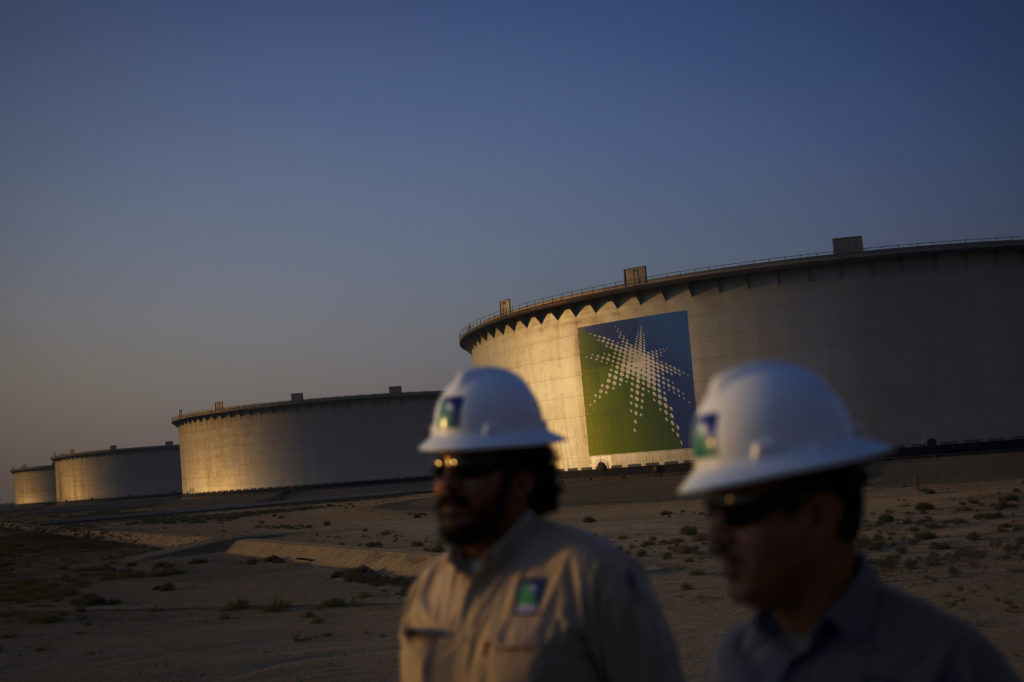
Saudi Aramco is conducting a strategic review of its upstream business, in a move that could potentially see the state-owned firm bring in external investors to some of its oil and gas assets, people with knowledge of the matter said.
The world’s biggest energy company is in preliminary discussions with advisers to evaluate its options, the people said, asking not to be identified as the matter is private. Aramco may study possibilities including selling stakes in the operations at certain fields or entering joint ventures with other large energy producers, the people said.
It could also form partnerships to develop new gas resources, according to the people. Any deal could raise billions of dollars for Aramco, which is at the center of Saudi Arabia’s economic transformation plan, the people said.
Aramco is unlikely to open up its most important oil assets, though it could bring in investors to less sensitive operations, the people said. Deliberations are at an early stage, and the structure of any potential deal hasn’t been decided, the people said. The company, which is formally known as Saudi Arabian Oil Co., declined to comment, as did the energy ministry.
Downstream Partnerships
Since Aramco was fully nationalized in 1980, most foreign investment in Saudi Arabia’s energy industry has been restricted to downstream assets such as refineries and petrochemical plants. In the past, the company struck joint venture agreements with firms including Royal Dutch Shell Plc and Total SE for the exploration and drilling of natural gas in the kingdom.
Even before Aramco attracted foreign partners to drill for natural gas in 2003-2004, it held detailed talks with Big Oil companies in the late 1990s to develop its reserves. The talks failed as most companies balked at the the terms that Riyadh was prepared to offer.
A few years earlier, Aramco also held discussions with foreign companies to develop the vast Shaybah oil field, but ultimately it decided to bring the asset into production on its own. Saudi Arabia’s hydrocarbons reserves are owned by the state and exploited by Aramco through a multi-decade concession agreement.
Profit Center
Aramco Chairman Yasir Al-Rumayyan has started selling stakes in non-core assets to help maintain the company’s $75 billion dividend, most of which goes to the Saudi government. The first deal was sealed earlier this month, when Aramco said it will raise more than $12 billion selling leasing rights over its oil pipelines to investors including EIG Global Energy Partners.
The company reshuffled its senior management last year and created a division focused on “portfolio optimization,” which will “assess existing assets” and boost access to growth markets. It is headed by Abdulaziz Al Gudaimi, who reports to Chief Executive Officer Amin Nasser.
Crown Prince Mohammed bin Salman, the kingdom’s de facto leader, told business executives last month that Aramco and the energy ministry are working on an “ambitious program in upstream and downstream” that’s bigger than previously-announced plans. The push could involve additional spending of 500 billion riyals to 1 trillion riyals ($133 billion to $266 billion) over the next ten years, he said.
Most of Aramco’s profit comes from its upstream business. Last year, the business posted a 40% decline in earnings before interest, tax and zakat — a local charitable contribution — to about $110 billion. It pumped about 9.2 million barrels a day of crude in 2020.
Record IPO
Aramco has been expanding its search for gas to meet rapidly rising local demand. Currently, Saudi Arabia burns huge quantities of crude directly in power stations during the summer to meet a surge in electricity demand for air conditioning. It also wants to use gas for the production of petrochemicals, a high-priority industry for the government in its strategy to diversify the economy.
Saudi Arabia plans to invest about $110 billion to develop unconventional gas reserves in the eastern Jafurah field, the official Saudi Press Agency reported last year. The field is expected to start production in 2024.
Aramco traces its roots back to concessions granted to U.S. oil companies nearly 90 years ago. The Saudi government first bought a stake in the company in 1973.
More recently, Aramco started a process of opening up that culminated in a record-breaking initial public offering on the Saudi stock exchange in 2019. That deal, which saw Aramco sell less than a 2% stake to outside investors, raised about $29.4 billion. Ahead of the listing, Aramco courted some of the world’s largest oil companies to act as cornerstone investors, though it ultimately didn’t reach an agreement for them to buy stock in the offering.
